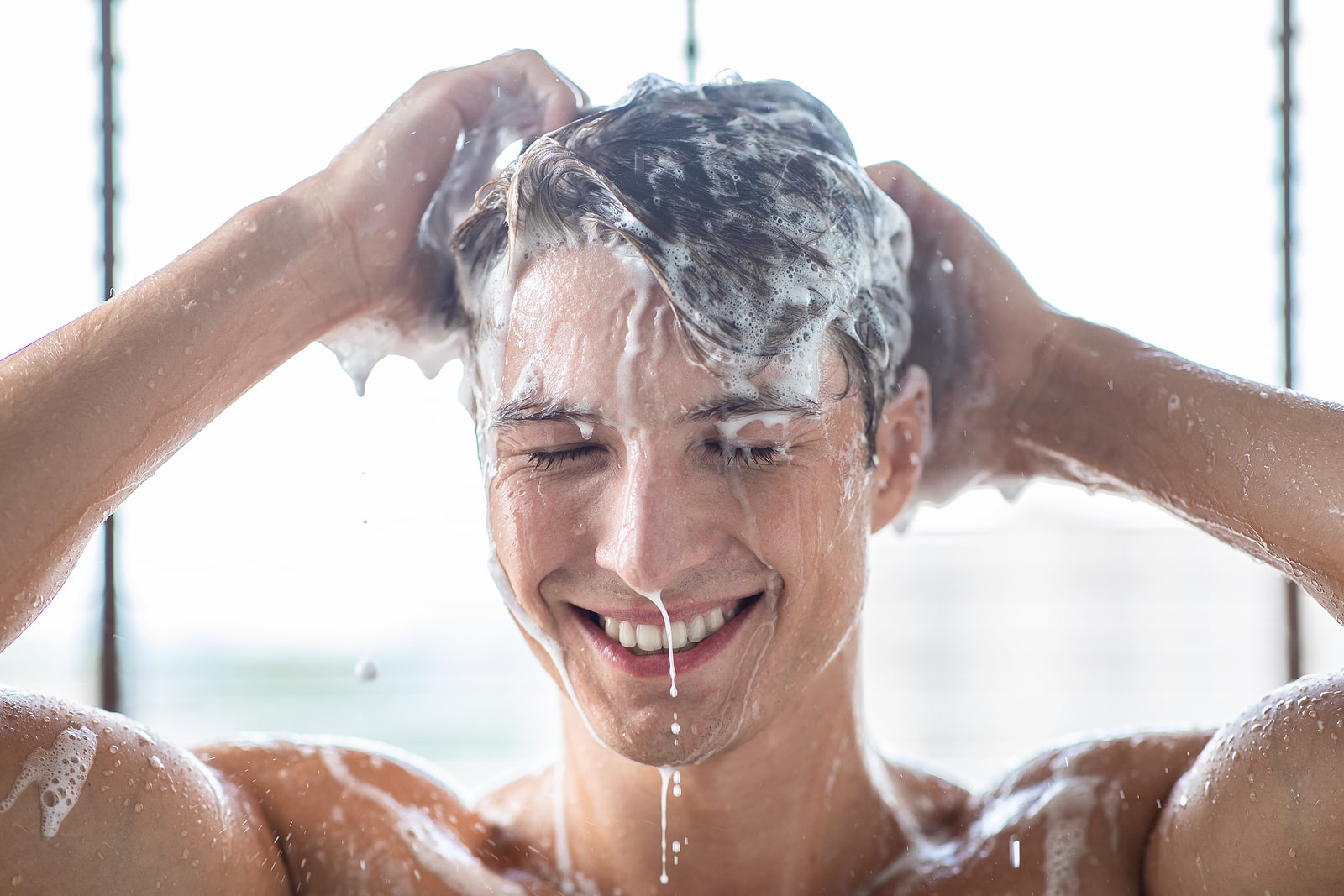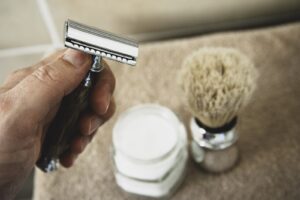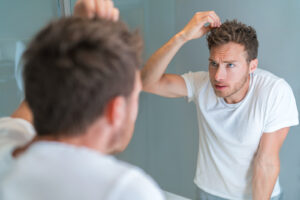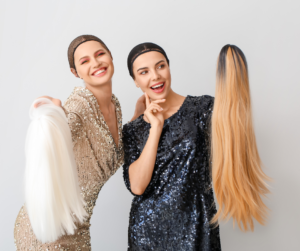Maintaining a healthy hair routine is just as important as following a skincare regimen. Your scalp is susceptible to many of the same infections caused by buildup of product, sweat, and environmental debris. Hair follicles also produce oil from the sebaceous glands which keep hair smooth, but also contribute to dirty scalp conditions without regular washing. As with the rest of your body, practicing hygienic haircare habits promotes an overall more healthful lifestyle. It can also help to prevent premature hair loss and prevent conditions such as dandruff, folliculitis, or even lice. Fortunately, it’s easy to develop a hair washing routine that fits into your daily lifestyle. Read on for our guide to healthy hair washing.
Developing a Healthy Hair Washing Routine
Plan Shampooing Days Ahead
In order to develop a hair washing routine you can actually maintain, choose the days you’re going to shampoo ahead of time. You can base this around your weekly schedule and prioritize certain days, depending on things like free time or events you need to attend. It’s not the end of the world if you need to deviate a little from your shampooing schedule, but try not to use it two days in a row. Shampoo is meant to be drying so that it can clean the scalp. However, using it too often will strip away the healthy natural oils produced by your scalp and leave hair too dry. Consult with a hair care professional to determine your specific needs. In general, it’s best to shampoo 3-4 times per week. You should still rinse your hair daily, though, to help it stay clean and reduce buildup of sweat and debris.
Choose Products Thoughtfully
- Hair Texture – If you have straight hair that falls flat from root to tip, you may have an oilier scalp and might want to avoid applying conditioner to their roots and choose products accordingly. Wavy- or curly-haired people tend to have dry hair and should look for products that help restore hydration and tame frizz.
- Hair Condition and Health – Hair health is a major consideration when it comes to selecting products. If your hair is damaged and dry, choose shampoos and conditioners that target this and replenish moisture. If your hair is greasy, look for products that volumize and control moisture levels.
- Sulfates and Chemicals – If you can, it’s best to avoid products that contain sulfates, which strip the hair and scalp of natural oils and color. Other chemicals, like parabens and triclosan, are extremely drying and interrupt natural hormone cycles. Stick to shampoos and conditioners that are as chemical-free as possible.
- Hair Color and Dye – If you color treat your hair, try to use products that protect color so you won’t have to dye as often, as coloring is harmful to hair. Ammonia in hair dye breaks through the hair cuticle and lifts it to get into the shaft. While the cuticle is lifted, it is extremely susceptible to damage and breakage, weakening hair overall. Choose products that help rehydrate and strengthen hair and protect color.
Gently Massage Your Scalp and Roots
When washing your hair, avoid scrubbing shampoo and conditioner in your roots and ends. This will cause tangling, and hair is at its most vulnerable to breakage when it is wet. Instead, gently work shampoo into your roots and around your scalp. This is the oiliest part of your hair and the most in need of the drying, cleansing effects of shampoo. Avoid hair ends, which require the extra hydration provided by conditioner because they are far from the scalp. If your scalp and hair are on the drier side, don’t leave your shampoo on for long.
Use Warm Water
It’s best to wash your hair with warm water. Warm water opens hair cuticles and pores on the scalp, which allows the shampoo to remove residue and dirt. It also stimulates the flow of blood to follicles, which encourages hair growth. The warmth of the water will naturally dry surplus oil without over-drying your scalp. If the water is too hot, it can weaken your roots and cause your hair to appear frizzy.
Leave Conditioner on for Five to Seven Minutes
If your roots are naturally oily, distribute conditioner throughout hair ends only. Since hair ends do not have access to the healthy natural oils produced by the scalp, conditioner works to hydrate them. Consider using a deep conditioner or a moisturizing treatment to deeply penetrate your hair and replenish moisture. Leave it on for five to seven minutes for maximum effectiveness. If your roots are dry, you may want to apply a small amount of conditioner across your scalp and rinse it out quickly.
Finish with Cold Water
Finishing your shower with some cold water may be a little uncomfortable. However, it will seal the cuticle of the hair, locking in the moisture provided by conditioner. It will also leave hair feeling and looking more smooth, manageable, and shiny. Make sure to thoroughly rinse your hair, as product buildup can cause your scalp to become oily and make it more difficult to stick to your hair washing routine.
Towel Dry and Use Protectant and/or Leave-in Conditioner
It is pretty much always best to let your hair dry naturally if you can, unless your hair is wet due to exposure to pool or ocean water. Hair dryers are extremely drying, which can cause hair to become brittle and break easily. If you do need to use it, be sure to use a heat-protectant product and hold the blow dryer as far away from your hair as possible. Finish drying on the cold air setting, as this will close the cuticle and protect hair ends from damage. Add a leave-in conditioner to your daily routine to help hair stay soft manageable and retain moisture.
Additional FAQs for Healthy Hair Washing and Scalp Care
-
How often should I wash my hair if I have an oily scalp?
If you have an oily scalp, you may need to wash your hair more frequently, around 4–5 times per week, to remove excess oil and buildup. However, avoid washing it daily to prevent over-drying your scalp. -
Is it necessary to rinse my hair daily if I don’t shampoo?
Yes, rinsing your hair daily with water can help remove sweat, debris, and surface oils without over-stripping your scalp’s natural moisture. -
How can I prevent dandruff while maintaining a healthy hair washing routine?
Use an anti-dandruff shampoo once or twice a week, and focus on massaging your scalp gently to remove buildup. Follow with a moisturizing conditioner to prevent dryness. -
Should I use different products for my scalp and ends?
Yes, it’s a good idea to use a clarifying or cleansing shampoo for your scalp and a more hydrating conditioner or mask for your ends to address their specific needs. -
What is the best way to detangle wet hair without causing damage?
Use a wide-tooth comb or a detangling brush, starting from the ends and working your way up to the roots. Avoid harshly tugging or pulling to minimize breakage. -
Can I skip conditioner if my hair feels oily?
You can apply conditioner only to the ends of your hair if your roots are oily. This ensures your ends stay hydrated without adding extra oil to your scalp. -
What is the purpose of finishing with cold water?
Cold water seals the hair cuticle, locking in moisture from the conditioner, and helps make your hair shinier and smoother. -
How can I minimize damage from heat styling if I need to dry my hair?
Always use a heat protectant spray before styling and set your tools to the lowest effective heat setting. Use the cool setting on your blow dryer to reduce the risk of damage. -
Are there specific shampoos for sensitive scalps?
Yes, there are shampoos specifically formulated for sensitive scalps that are free of harsh chemicals like sulfates and parabens. Look for products with soothing ingredients like aloe vera or chamomile. -
How can I tell if my hair washing products are causing irritation?
Signs of irritation include itchiness, redness, or flaking shortly after washing. If this happens, switch to hypoallergenic or sulfate-free products to see if your symptoms improve.
Contact Us for Baltimore Hair Loss Services and Solutions
If you are interested in hair restoration or hair replacement services in D.C., Maryland, or Virginia, contact Eldorado today. Our hair loss experts can help choose the best restoration method for your individual goals and needs. Call (410) 931-3399 to schedule a free hair analysis at our Baltimore hair restoration center.





